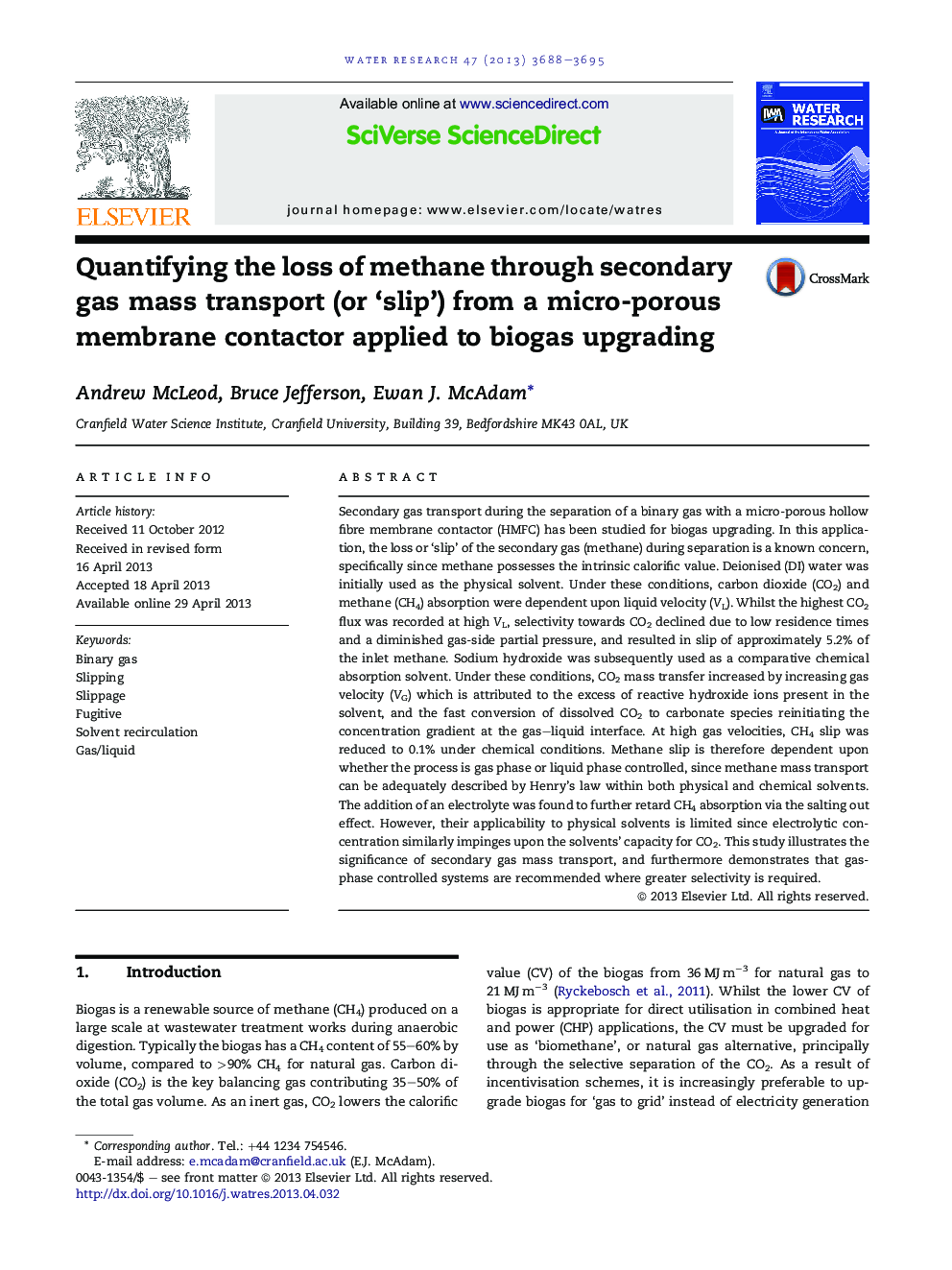| Article ID | Journal | Published Year | Pages | File Type |
|---|---|---|---|---|
| 4482180 | Water Research | 2013 | 8 Pages |
•Illustrated the significance of secondary gas mass transport, or ‘slip’ during biogas separation.•Methane slip is dependent upon whether the process is gas phase or liquid phase controlled.•Chemical absorption enables gas-phase control due to reactivity reinitiating concentration gradient.
Secondary gas transport during the separation of a binary gas with a micro-porous hollow fibre membrane contactor (HMFC) has been studied for biogas upgrading. In this application, the loss or ‘slip’ of the secondary gas (methane) during separation is a known concern, specifically since methane possesses the intrinsic calorific value. Deionised (DI) water was initially used as the physical solvent. Under these conditions, carbon dioxide (CO2) and methane (CH4) absorption were dependent upon liquid velocity (VL). Whilst the highest CO2 flux was recorded at high VL, selectivity towards CO2 declined due to low residence times and a diminished gas-side partial pressure, and resulted in slip of approximately 5.2% of the inlet methane. Sodium hydroxide was subsequently used as a comparative chemical absorption solvent. Under these conditions, CO2 mass transfer increased by increasing gas velocity (VG) which is attributed to the excess of reactive hydroxide ions present in the solvent, and the fast conversion of dissolved CO2 to carbonate species reinitiating the concentration gradient at the gas–liquid interface. At high gas velocities, CH4 slip was reduced to 0.1% under chemical conditions. Methane slip is therefore dependent upon whether the process is gas phase or liquid phase controlled, since methane mass transport can be adequately described by Henry's law within both physical and chemical solvents. The addition of an electrolyte was found to further retard CH4 absorption via the salting out effect. However, their applicability to physical solvents is limited since electrolytic concentration similarly impinges upon the solvents' capacity for CO2. This study illustrates the significance of secondary gas mass transport, and furthermore demonstrates that gas-phase controlled systems are recommended where greater selectivity is required.
